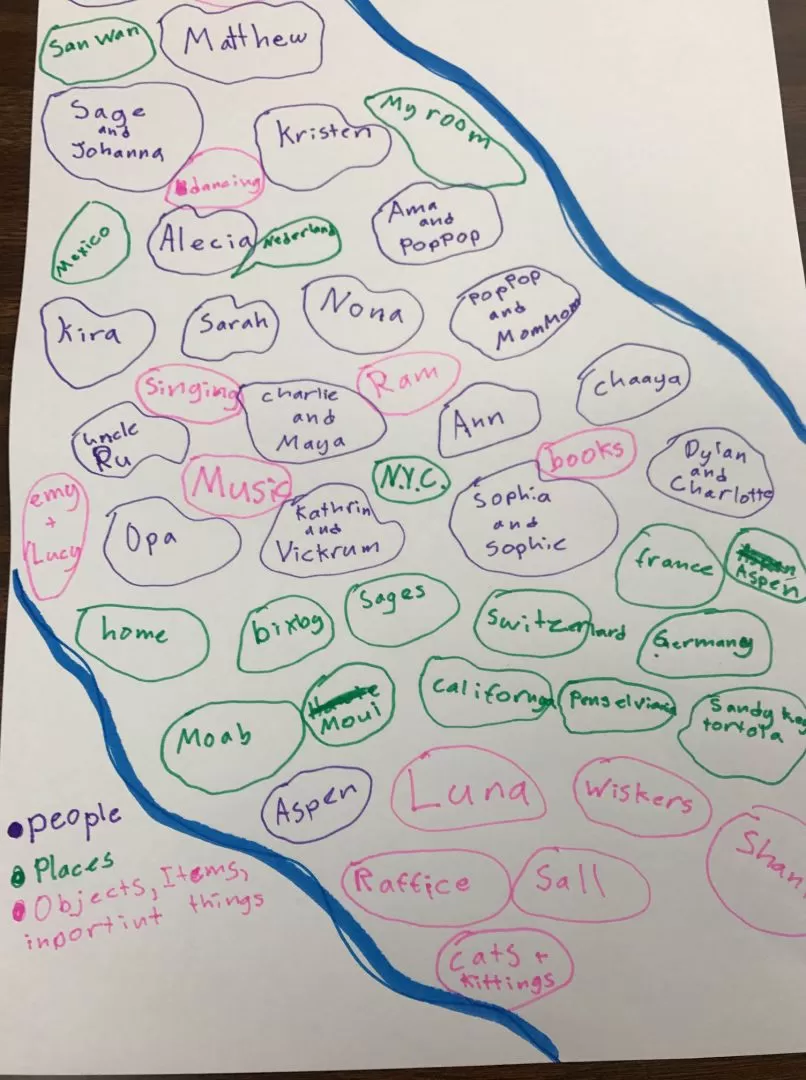According to the frontier-life author, Willa Cather “Most of the basic material a writer works with is acquired before the age of fifteen.” Add to that, most authors write using a blend of personal experience and a chosen perspective to create their original pieces, and you can see why writing from real experience becomes essential to crafting an authentic piece that provides the reader with both interest and engagement.
“Stones in the River” is a pre-writing activity that helps a writer generate a diverse map of ideas to write about that originates from personal experience. In this activity, students are asked to fill their river with stones that represent people, places, objects, and memories from their life. In some cases, these rivers may be color coded. Students often add onto this “river” over time as they gain understanding and can better recognize how “big and little” life experiences provide a platform for writing. Filling the river also creates a dialogue within the classroom writing community to share similar or common experiences as well as contemplating how both happy and sad experiences can be lived through a wide-variety of writing forms.

Using the Writers’ Workshop model allows for students to develop their piece in a manner that suits their style or interest. It is important to allow students to make choices related to their writing. Students are able to use writing mechanics comfortably and the shift in their cognitive abilities to higher order thinking allows them to develop a more sophisticated sense of what makes good writing. One big difference in Upper Elementary students is an ability to think through their options before starting the first draft. Peer conferencing is still useful to students.
The collection of completed pieces spans traditional use of paragraphs, open verse, rhyme, and dialogue. Some students told the story of Lower Yard using a student’s third person point-of-view; others told it using the first person point-of-view. As the discussion of audience carried on, the notion of other, less expected perspectives developed. What would a tour of Lower Yard sound like? What about the perspective of the neighboring cat who frequents Lower Yard? What if Lower Yard itself had a voice?
In the end, a multitude of textured writing styles blending explanation, description, rhythm and creativity flowed forth; none to be compared to the other. It certainly looks like it will be a bountiful year for writing. If you see a 4th or 5th grader, ask them about their writing!



